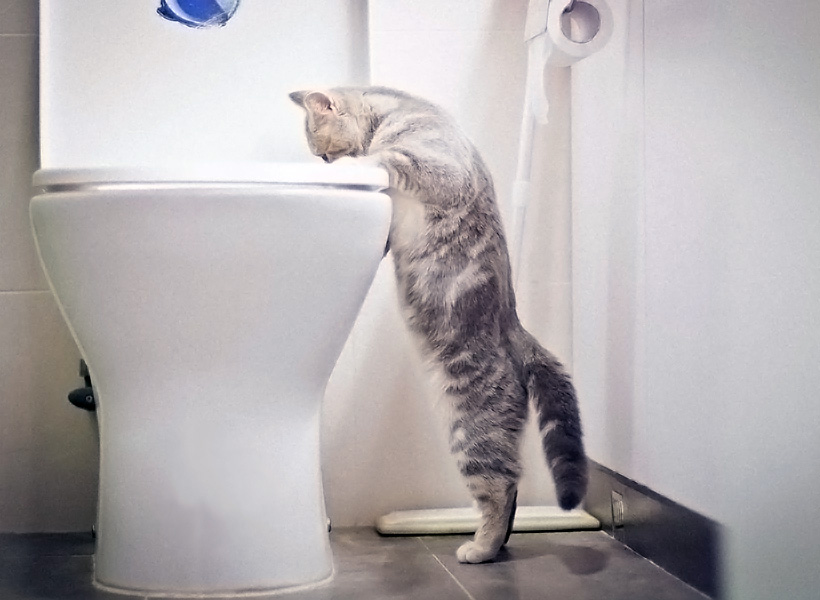What're your thoughts and feelings on How to Dispose of Cat Poop and Litter Without Plastic Bags?

Intro
As cat proprietors, it's important to be mindful of how we dispose of our feline close friends' waste. While it might seem practical to flush pet cat poop down the bathroom, this technique can have damaging effects for both the setting and human health.
Ecological Impact
Purging pet cat poop introduces damaging virus and parasites into the water, positioning a considerable threat to aquatic communities. These pollutants can adversely influence aquatic life and concession water quality.
Health and wellness Risks
Along with ecological problems, flushing feline waste can additionally position health and wellness risks to human beings. Feline feces may contain Toxoplasma gondii, a bloodsucker that can trigger toxoplasmosis-- a potentially severe ailment, specifically for pregnant females and individuals with damaged immune systems.
Alternatives to Flushing
Fortunately, there are much safer and more responsible methods to take care of cat poop. Think about the following options:
1. Scoop and Dispose in Trash
The most usual method of taking care of pet cat poop is to scoop it into a biodegradable bag and throw it in the trash. Make sure to utilize a specialized litter inside story and get rid of the waste promptly.
2. Usage Biodegradable Litter
Select eco-friendly cat litter made from materials such as corn or wheat. These trashes are eco-friendly and can be safely dealt with in the garbage.
3. Hide in the Yard
If you have a backyard, consider burying feline waste in a designated area away from veggie yards and water sources. Make certain to dig deep adequate to prevent contamination of groundwater.
4. Mount a Pet Waste Disposal System
Invest in a pet dog garbage disposal system specifically created for feline waste. These systems use enzymes to break down the waste, reducing odor and environmental impact.
Conclusion
Accountable family pet ownership extends past offering food and sanctuary-- it also entails appropriate waste monitoring. By refraining from flushing pet cat poop down the bathroom and selecting different disposal methods, we can lessen our ecological footprint and safeguard human health.
Why Can’t I Flush Cat Poop?
It Spreads a Parasite
Cats are frequently infected with a parasite called toxoplasma gondii. The parasite causes an infection called toxoplasmosis. It is usually harmless to cats. The parasite only uses cat poop as a host for its eggs. Otherwise, the cat’s immune system usually keeps the infection at low enough levels to maintain its own health. But it does not stop the develop of eggs. These eggs are tiny and surprisingly tough. They may survive for a year before they begin to grow. But that’s the problem.
Our wastewater system is not designed to deal with toxoplasmosis eggs. Instead, most eggs will flush from your toilet into sewers and wastewater management plants. After the sewage is treated for many other harmful things in it, it is typically released into local rivers, lakes, or oceans. Here, the toxoplasmosis eggs can find new hosts, including starfish, crabs, otters, and many other wildlife. For many, this is a significant risk to their health. Toxoplasmosis can also end up infecting water sources that are important for agriculture, which means our deer, pigs, and sheep can get infected too.
Is There Risk to Humans?
There can be a risk to human life from flushing cat poop down the toilet. If you do so, the parasites from your cat’s poop can end up in shellfish, game animals, or livestock. If this meat is then served raw or undercooked, the people who eat it can get sick.
In fact, according to the CDC, 40 million people in the United States are infected with toxoplasma gondii. They get it from exposure to infected seafood, or from some kind of cat poop contamination, like drinking from a stream that is contaminated or touching anything that has come into contact with cat poop. That includes just cleaning a cat litter box.
Most people who get infected with these parasites will not develop any symptoms. However, for pregnant women or for those with compromised immune systems, the parasite can cause severe health problems.
How to Handle Cat Poop
The best way to handle cat poop is actually to clean the box more often. The eggs that the parasite sheds will not become active until one to five days after the cat poops. That means that if you clean daily, you’re much less likely to come into direct contact with infectious eggs.
That said, always dispose of cat poop in the garbage and not down the toilet. Wash your hands before and after you clean the litter box, and bring the bag of poop right outside to your garbage bins.
https://trenchlesssolutionsusa.com/why-cant-i-flush-cat-poop/

Do you enjoy reading up on Don’t flush cat feces down the toilet? Give feedback down the page. We will be pleased to find out your suggestions about this blog. Hoping that you come back again before long. Sharing is nice. One never knows, you could be helping someone out. Many thanks for your time spent reading it.
Call Today
Comments on “Reasons You Should Never Flush Cat Poop Down Your Toilet - Important Information”